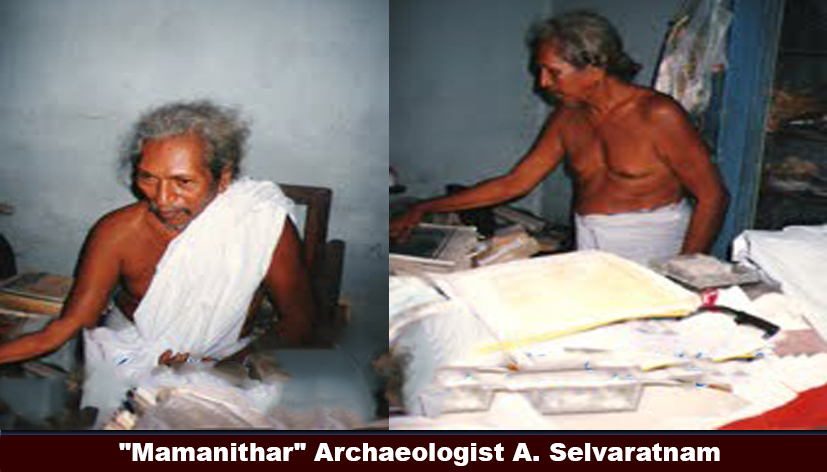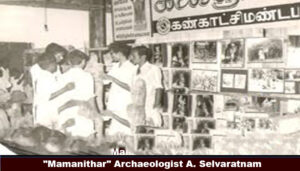

“Mamanithar” Archaeologist A. Selvaratnam

“Mamanithar” Archaeologist A. Selvaratnam
Archaeologist A. Selvaratnam has dedicated his entire life to finding and preserving the historical traces of the Eelam. For more than 50 years, he roamed the jungles and sought to find and preserve many treasures. Born in 1933 to Kurumpachitti Ariyakutty, he was educated first at Mahadeva Siddhalai and later at Union College, Thellipappa. In 1947, he exhibited 3 old coins & a conch shell found in his house in an exhibition at Union College and the silver medal that was given to him as a gift from the Chancellor inspired him to engage in this work. He used to preserve artefacts, antiquities, old footprints, manuscripts (copies) to the best of his ability.
In 1974 the archaeologist’s display of artefacts at an exhibition held at Sundukkuzhi Women’s College during the Fourth World Tamil Conference in Jaffna surprised everyone. He had items that no other museum in Sri Lanka had. In 1991, his grand Arum exhibition at Jaffna University was held for 12 days. It was exhibited at Navalar Cultural Hall in 1992, at Nallur Mangaiyakarasi Vidyalaya in 1993 and at Chavakacheri Hindu College in 1994. In 1994, the artist was honoured with the award of “Mamanithar” at the Muthamil Festival held by the Tamil community.

Due to the civil war that broke out in our country in 1986, most of his artefacts were destroyed and lost, but he used to keep the rest in a private house at Parameswarach Sandhi, Palali Road. Another archaeologist who was given the honour by our National Leader His Excellency Prabhakaran was Selvaratnam, an archaeologist who was called by everyone as a future genius. The work of documenting the history of generations is still remembered today. He documented the historical existence of Eelam by searching for and documenting the historical existence of Eelam. He was engaged in this work alone for 55 years. The history professors of the University of Jaffna also praised his work and conducted research on him. Migrating into the lingual cavity during the 1995 military operation carried out by the state army on the peninsula, many of the valuables he had collected were also destroyed by the army.